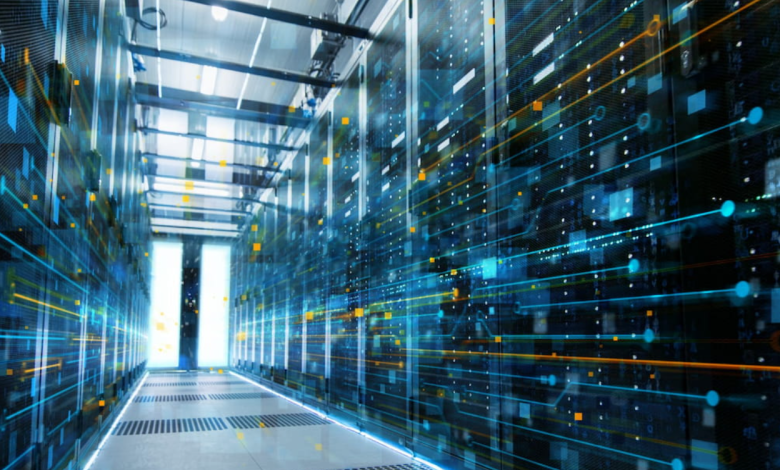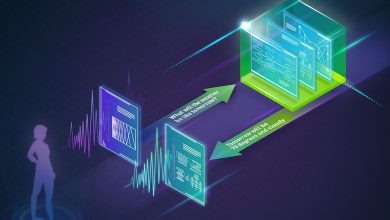AI Will Change the Nature of Data Centre Builds, Driving Growth in Southeast Asia

By Matias Peluffo, Vice President, Data Centres, Asia Pacific, CommScope
The Data Centre market in Southeast Asia (SEA) is at an inflection point. Last year, we noted that the exponential growth of demand for AI compute in data centres would drive more efficient processes, faster builds and more creative problem-solving to address challenges such as increasing demand for rapid deployments, power, cooling, connectivity density, and the persistent shortage of top IT talent, and this has certainly proven to be true.
In a relatively short period of time, SEA has emerged as one of the fastest-growing data centre regions globally. While Singapore has been the largest market in the region to date, further growth is being managed carefully due to land constraints and power limitations. But Singapore’s constraints have opened opportunities elsewhere in the region. Malaysia has become the leading Data Centre hotspot in the region, with large projects underway especially in Johor, while other countries such as Thailand, Indonesia and Vietnam also growing rapidly .
According to the latest BCG report exploring the growth of data centres in SEA, regional demand will triple to reach between 5.2 GW and 6.5 GW by 2030, driven by continued digitisation, expanding connectivity and the acceleration of AI adoption among a young and digitally native population. This demand will be supercharged by the rapid growth in AI compute requirements, which are expected to grow at a remarkable 10x over this period.
Moving forward, AI implementations will require much greater compute power than other forms of processing, as increasingly power-hungry GPUs labour to meet growing demand. In 2024, the need for more energy-efficient strategies became clear. In 2025, we will see those strategies put into practice. Already there are some big moves and bold plans on the table, driving changes in data centre builds that will propel both traditional Data Centres and AI factories to the next level.
AI compute gains steam, prompting reviews of energy options
The biggest names in tech, including Hyperscalers and Cloud providers, as well as emerging local players are pouring billions of dollars into SEA’s new digital infrastructure landscape as the race to AI compute gains steam. It’s not only the technology of AI that’s evolving, but also the delivery model; AI as a service is paving a smooth road for enterprise adoption of AI capabilities, particularly generative AI that can fill multiple roles from customer service to long-term financial planning. Indeed, data centres themselves are increasingly making use of GenAI to address the persistent lack of skilled IT employees by using AI to monitor, manage and support lean IT teams so they can be more productive. With an intuitive way to ask questions and receive recommendations, IT teams can become more efficient and relieve some of the labour stresses data centres face.
However, the GenAI systems that are currently being deployed can use up to 33x more energy than regular processes without AI. The computational power needed for sustaining AI’s growth is also doubling roughly every 100 days. As these systems gain traction and further develop, we will see drastic increase in data centres needed and associated energy usage. With power demands rapidly increasing, reliable grids and efficient power generation are critical, and regional governments and utilities are actively exploring innovative power generation options and conducting feasibility studies for additional sources of renewable energy, as well as cautiously exploring the potential benefits and challenges of deploying small nuclear reactors to power Data Centres.
Data centres in the region are doing what they can to reduce energy consumption—both as a matter of economics and environmental responsibility—by deploying liquid cooling systems in place of less-efficient forced air cooling. As the scale of GPU-powered AI compute rises, the required cooling efficiencies are becoming more critical, and the industry is moving towards increasing reliance on liquid cooling and further reduction of air cooling. This is especially critical, as excessive heat caused by SEA’s climate and more frequent heatwaves is a prime culprit in data centre outages.
Optimising the profile of infrastructure
Related to both power and cooling needs, the data centre’s fibre infrastructure continues to become denser in AI compute facilities. GPUs in AI arrays must be fully networked—every GPU must be able to talk to every other GPU—which increases complexity and number of connections by an order of magnitude and complicates cooling. To overcome the bulk of the required fibre infrastructure, data centres will use highly dense fibre systems to make those countless connections, packing more fibres and connectors into the existing footprint to power AI networks. Plus, as data centres migrate from 2x400G (aggregate 800G) to native 800G and beyond, this advanced fibre infrastructure will provide some much-needed bandwidth capacity to accommodate future upgrades.
The importance of a holistic regional approach
The fundamental changes coming to data centres in this dawn of the AI age will be truly remarkable. As AI continues to make inroads in the enterprise space, it’s clear that growing demand for data centres will unlock significant opportunities in SEA, and the capacity will need to expand to meet increasing needs from AI compute. And while there is no end in sight to the ongoing shortage of top-skilled IT expertise, AI itself is already demonstrating ways that it can help operators fill those gaps with GenAI-powered monitoring and management.
With SEA’s strategic and neutral geopolitical positioning, coupled with robust access to submarine connectivity, the road forward for the region’s data centre industry is clear. While the industry remains fragmented, governments across the region have taken concrete steps and investments to foster whole-of-ecosystem collaboration. Notably, the establishment of the Asia-Pacific Data Centre Association aims to enhance cooperation, set better standards, develop policies and strengthen environmental sustainability. Such collaborations are key to driving positive industry impact and represent a significant step toward sustaining SEA’s progress and potential as a global data centre powerhouse.




